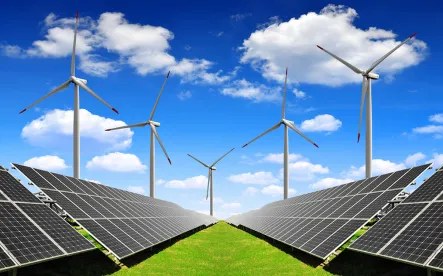It’s been one year since Illinois passed a sweeping energy bill – the Energy Transition Act, PA 102-0662 – commonly referred to as the Climate and Equitable Jobs Act (CEJA). The law targets 50% renewable electricity procurement by 2040 and 100% carbon-free electricity by 2050. To help achieve these goals, CEJA requires the Illinois Commerce Commission to draft a Renewable Energy Access Plan, which will identify and promote development in “Renewable Energy Zones” across the state.
This post summarizes the ongoing drafting process and the effort to identify Renewable Energy Zones. Next week, we’ll describe how the draft Plan seeks to facilitate renewable development in Illinois through the state’s participation in regional transmission organizations.
ICC staff published its draft Renewable Energy Access Plan on July 12, 2022 (linked here). Under CEJA, the ICC must accept comments on the draft Plan until November 9, 2022. In the meantime, the Commission is holding a series of stakeholder workshops to solicit feedback on the draft Plan. ICC staff will submit a second draft of the Plan within 90 days following the close of the comment period, and the Commission must open a formal docket by December 31, 2022, to develop and adopt a final Plan.
The draft Plan estimates that to meet Illinois’ target of 100% carbon-free electricity by 2050, the state must add at least 64 Terawatt hours of carbon-free supply. For that reason, identifying and promoting Renewable Energy Zones – in which the state will seek to promote renewable electricity development – is a key goal of the draft Renewable Energy Access Plan. In the draft Plan, ICC staff proposes six factors by which Renewable Energy Zones should be identified:
-
Renewable Resource Potential
-
Favorable Local Zoning and Permitting Rules
-
Land Use Constraints
-
Potential to Reduce Local Marginal CO2 Emissions
-
Equity Considerations
-
Locations of Fossil Fuel Generation Retirements
Using these factors, the draft Plan states its goal is to “identify sufficient candidate zones to satisfy the state’s total renewable procurement target.” The draft Plan notes that if insufficient resources are identified, the Commission may recommend other measures, such as statewide renewable energy ordinances (which could require further legislation), to expand the potential for future renewable development in Illinois.
The draft Plan specifically requests comment on a number of elements, including what criteria and data should be used to identify Renewable Energy Zones, what land use constraints should be considered, and how existing interconnection capacity should be evaluated.
Next week, we’ll address the steps the draft Renewable Energy Access Plan contemplates for influencing regional transmission development to support renewable generation.




 />i
/>i

